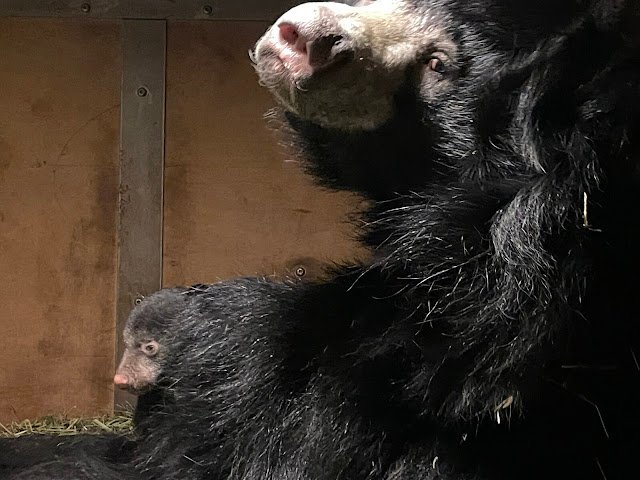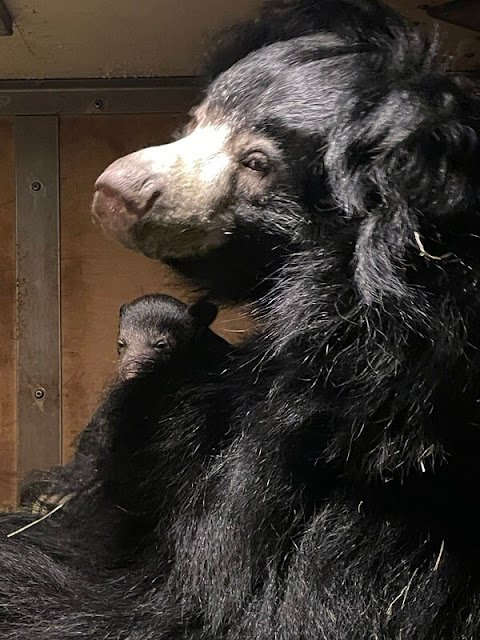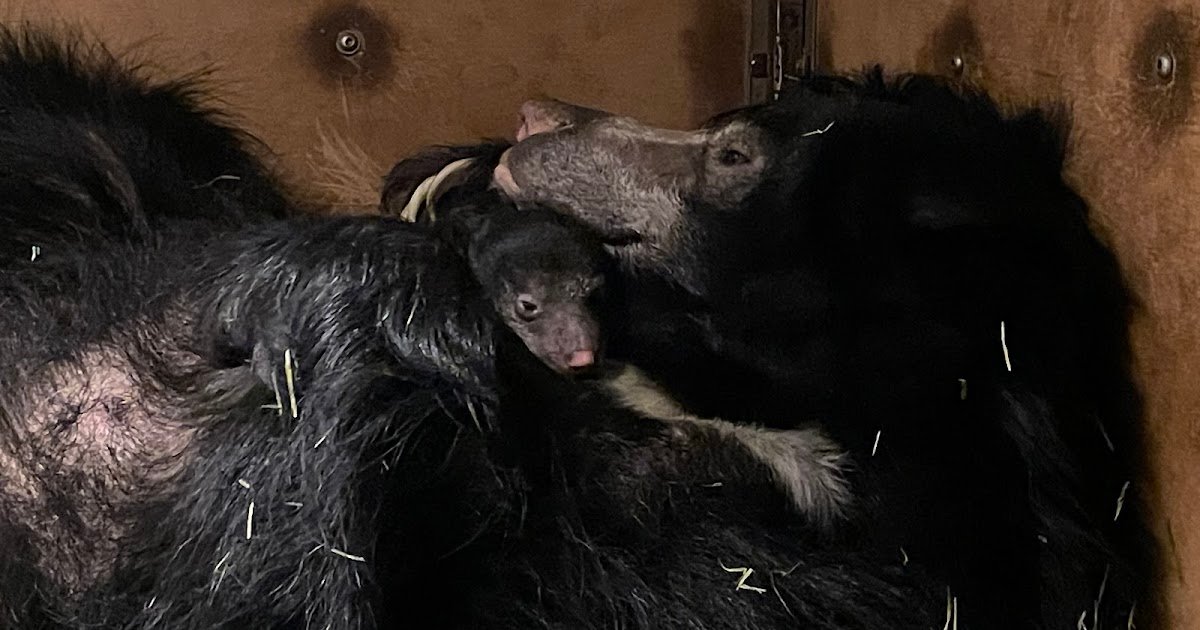When winter hangs on, and people still immerse themselves in fun, a mum is -devoting is Denning with her new kids, a girl! Cub was born in January to Mother Kushali and Father Bhutan. The gestation period for the sloth bears is about six months. Zoo’s Sloth Bear -Team has appointed The Cub Bowie as a tribute to the deceased David Bowie, whose birthday is 8 January, the same day the kid was born. The last birth of the sloth bears at the Zoo was in 2022 when Kushali gave birth to his first offspring – a son and daughter who continues to thrive in new homes.
Woodland Park Zoo Animal Curator Martin Ramirez explained that Bowie uses regularly, she is very vocal and she has a full, rounded stomach, all positive signs she is healthy. Kushali and Bowie are currently living in an off-view maternity cave for a more calm, comfortable environment to encourage binding and monitored on a den-CAM.
| Mother, Kushali, is an experienced and attentive mother! Photo: Woodland Park Zoo |
Zoo’s other sloth bears, father Bhutan and Tasha, spend more time on views in their its it. When the weather warms up, they will be more active and visible in their habitats in Banyan Wilds, which is also home to Malaysian tigers, Asian small itched os and a variety of birds.
The first few months for sloth bears are very fragile. Cubs are born extremely small and blind and weighs only around a pound. They open their eyes around 25-35 days old and try to go from 45-55 days. When the kids reach about 2 months old, they take a walk on Mother’s back, a unique behavior that Sloth wears mothers does to transport their kids and will run until they are 6 to 9 months old.
According to the care team, binding between mother and cub has been great. “Kushali is a very attentive mother. On the few occasions, she has left Maternity that she is not out for a long time and will quickly run back in to check out her kids, which is the kind of behavior we want to see, ”said Arden Robert, an animal care manager at Woodland Park Zoo.
 |
| Sloth Bjørnunger Open their eyes about 25-35 days old, and try to go from 45-55 days. Photo: Woodland Park Zoo |
In fact, Kushali keeps such a tight paw on her young that the care team has only been able to get their hands on her for a birth exam when she was 2 weeks old. “Kushali remains essentially with her newborn full time, so we have not been able to make more wellness exams. However, our animal health team has visual exams regularly, and animal holders have their eyes on her daily to monitor her growth and development. “Added Robert.” As a single Union, Bowie seems to be a little bigger and fuller than kids at her age because she doesn’t have to compete and share Mama’s milk with any littermates – she gets milk all for herself! “
As she continues to thrive during the care of her mother, Bowie has reached a few notable milestones. Her eyes are completely open and her ears are sloped up. She is now darker in color and has been observed and tries to sit up on her own as she supports her weight on Kushali. Animal holders also report that Bowie is more aware of their presence in the area.
A behavior observed by the care team is Kushali who “rocks” the kid. “When the kid is fussy, Kushali places the kid on her feet and jumps her to reassure her; It’s a pretty sweet, characteristic behavior, ”Robert noted.

Sloth bears in zoos are rare, with 48 currently living in zoos accredited by the Association of Zoos & Aquariums, and every birth of sloths is significant for the Sloth Bear articles of experience. Art survival plans are collaborative programs across accredited zoos to help ensure healthy, genetically different, self -supporting populations of selected species or subspecies.
About Lovendyr Bears
- Sloth wears lives in forests and grasslands in Bangladesh, Bhutan, India, Nepal and Sri Lanka.
- Adults Lovendyr Bears are missing their top two front teeth (derives), which let them suck ants and termites right out of their underground tunnels, like a vacuum cleaner! Their unclear, dusty, black coats deflate sunlight and protect them from extreme tropical heat. No wonder they are lovingly described as Shaggy Slurpers!
- Sloth carries feed for termites, grubs and other insects; They also eat grass, flowers, fruit and honey plus occasional eggs and grown crops. In the zoo they eat insects, honey, fruit and vegetables, eggs and omnivore chow.
Hope for sloth bears
- A vulnerable species, Sloth Bears’ survival, is challenged by conflicts with humans and animals for space and food caused by deforestation, the Bear Parts trade for use in traditional Asian medicine and fragmented populations.
- Woodland Park Zoo supports Wildlife SOS, a conservation organization in India that operates wildlife rescue centers and helps society exist with sloths and other native species. Visit www.zoo.org/donate to support SOS.
- Buy wisely. Select Forest Stewardship Council (FSC) Certified paper and wood products to protect forest habitat and wildlife. By purchasing FSC-certified forest products, consumers help protect the habitat of sloths by encouraging sustainable forestry and limiting the overcast of forest products (wood, fuel, fruit and honey). Without the FSC mark, wood can come from illegal forest and forests that are not responsibly controlled.
